The Versatility of Thick Shawls: An Essential Guide


Intro
Thick shawls are much more than mere fabric draped over shoulders; they embody versatility, culture, and style. As they have woven their way through history, shawls have been adopted by various cultures, serving different functions ranging from warmth to a statement piece in fashion. For anyone keen on elevating their wardrobe without sacrificing comfort, understanding the multifaceted nature of thick shawls can be a game changer.
In this guide, we will investigate the historical significance of these versatile pieces, showcasing their evolution in design, material, and styling techniques. We will examine the latest fashion trends and share practical tips on how to care for these cherished items, ensuring they remain vibrant and enduring pieces in your collection. By the end of this article, you should feel empowered to integrate a thick shawl into your style with confidence, embracing both its practical benefits and aesthetic allure.
Understanding Thick Shawls
The realm of thick shawls is fascinating, blending both utility and fashion into one cozy package. These items are more than mere accessories; they can transform looks and serve practical functions. The importance of understanding thick shawls lies in their versatility, making them a staple in wardrobes worldwide. With their ability to complement a diverse range of outfits, from elegant evening wear to casual attire, they have firmly rooted themselves in both history and modern fashion.
The role of thick shawls in providing warmth while also being a style statement is often underestimated. As we dive into the intricacies of what makes a thick shawl unique—its characteristics, history, and cultural significance—the reader gains a broader appreciation of how this textile can enhance personal style and functionality.
Definition and Characteristics
A thick shawl is typically a larger piece of fabric worn around the shoulders and upper body, designed not just for warmth but also to add layers to one’s outfit. Unlike thinner scarves, thick shawls employ heavier materials, making them ideal for colder climates. Common characteristics include:
- Generous Size: Often oversized, these shawls provide ample coverage, allowing them to be wrapped and styled in multiple ways.
- Material Richness: Made from textiles like wool, cashmere, or blends, ensuring optimal warmth and comfort.
- Varied Patterns: They can showcase a range of designs, from simple solids to intricate patterns, reflecting personal style or cultural heritage.
- Layering Capability: Their bulk allows them to be layered easily, enhancing any outfit's sophistication.
Understanding these basic elements sets the stage for further exploration of thick shawls' historical significance and cultural relevance.
Historical Context
Ancient Uses in Different Cultures
Throughout history, thick shawls have served various purposes in different cultures. In ancient civilizations, such as the Romans and Greeks, shawls were often symbols of status and elegance. Women used them to signify wealth, bedecked in luxurious materials that draped beautifully. For instance, in far Eastern nations, shawls woven from fine threads often depicted stories, mythology, or familial lineage, serving as important cultural artifacts.
One remarkable trait is their adaptability; across continents, different societies have embraced shawls to reflect their heritage through various designs. For instance, the Andean women's use of ponchos, akin to shawls, carried not only practical warmth but also a melting pot of symbols and colors representing identity and regional pride.
As a beneficial choice, these shawls have become integrated into festivities and rituals, enhancing everyday life while celebrating cultural roots. This diverse usage emphasizes their timeless allure.
Evolution of Design Over Centuries
The evolution of thick shawls has been profound, responding to changing aesthetics, fashion trends, and technological advancements in textile production. Initially crafted by hand, these garments reflected the artistry of the weaver, often showcasing detailed craftsmanship that transmitted social messages and personal stories.
As global trade expanded, the influences intermingled, leading to a rich tapestry of styles. The kaleidoscope of shawls now ranges from geometric patterns of the Middle East to the floral motifs beloved in Western fashion.
Notably, shawls have shifted from functional items to modern-day fashion statements. Today, the unique feature is their transformation into designer pieces that capture both artistry and wearability.
The advantages of this evolution are manifold. They offer not only warmth but also a canvas for creative expression, allowing wearers to incorporate personal flair. The diversity of designs available reflects the cultural histories represented in shawls, making them not only garments but also narratives woven into fabric.
As we look ahead in this article, understanding these nuances prepares us for an exploration of the types and styling possibilities of thick shawls—an essential aspect of curating a wardrobe that is both functional and fashionable.
Types of Thick Shawls
When discussing the versatility of thick shawls, it's crucial to appreciate the wide range of types available. Each type offers distinct advantages and serves various functions in fashion. Understanding these types helps individuals make informed choices that enhance their wardrobe. Whether for warmth, style, or sustainability, recognizing the variety equips you with the knowledge needed to select the ideal shawl for any occasion.
Material Variations
Wool: Warmth and Durability
Wool is a classic hallmark of warmth and longevity. It's loomed for comfort and practicality, making it a go-to choice for those chilly winter evenings. The fibers are excellent at regulating temperature, providing not only comfort but also durability that withstands the test of time.
Its unique feature lies in the moisture-wicking properties which keep you dry while wrapped up.
The warmth provided by wool shawls makes them particularly popular among consumers in colder climates. However, one should be mindful of potential irritation for sensitive skin as some wool varieties can be prickly. Overall, when considering shawls for their warm embrace, wool consistently stands out.
Cashmere: Luxurious Softness
Nothing screams luxury quite like cashmere. Its soft texture is unmatched, making it one of the most coveted materials for shawls. People adore cashmere for its cozy yet lightweight feel. This softness is not only luxurious but also feels exquisite against the skin.
While cashmere offers warmth similar to wool, its unique selling point is its feather-light weight, providing both warmth and ease, which makes it perfect for dressing up casual outfits while keeping you comfortable. However, the price can be a disadvantage as it is often more expensive than its counterparts, yet many consider it a worthy investment.
Acrylic: Affordable and Diverse
Acrylic shawls bring affordability to the forefront without skimping on style or functionality. Acrylic fibers mimic the texture of wool but are typically lighter, making them versatile for various looks.
This material is not only budget-friendly but also available in a multitude of colors and patterns, catering to an eclectic range of tastes.
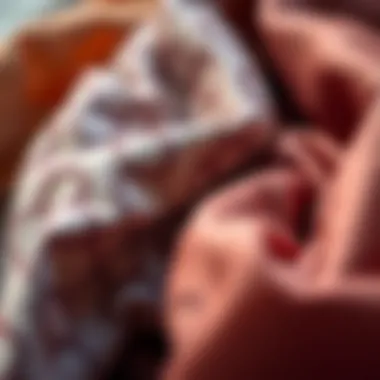
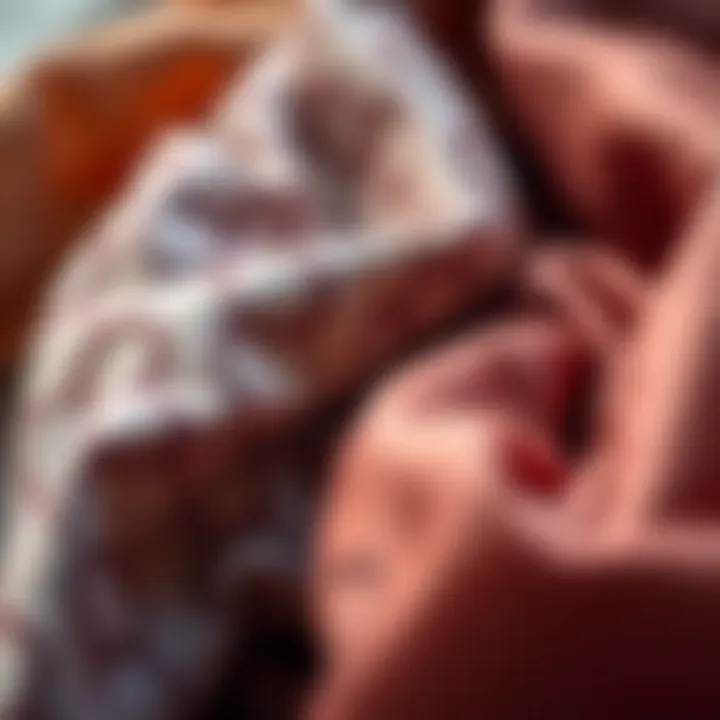
However, while they may lack the durability and warmth of wool, acrylic shawls dry rapidly and resist fading, thus serving their purpose well in eclectic wardrobes. For someone looking to add playful patterns to their collection without breaking the bank, acrylic shawls present an excellent option.
Styles and Designs
Classic Cape Shawls
The classic cape shawl, often draped elegantly over the shoulders, harkens back to vintage styles while retaining a contemporary relevance. This style is beloved for its versatility and can elevate any outfit from basic to chic in seconds. The open front design allows for ease of wear and movement.
The key characteristic of a classic cape shawl is its ability to blend seamlessly into various settings, whether it’s paired with a casual ensemble or dressed up for an evening out. However, certain body types may find it bulky if not styled carefully.
Trendy Ponchos
Trendy ponchos encapsulate a spirit of effortless style. They are typically oversized, offering a relaxed fit that's both chic and comfortable. They tend to feature intricate patterns or textures that make them more than just a covering, but a statement piece.
This style is particularly beneficial for out-and-about scenarios as it allows for layering without feeling constricting. On the flip side, their loose structure might not suit every occasion, especially formal ones.
Wrap Shawls for Versatility
Wrap shawls offer a unique adaptability; they can be styled in countless ways, from a casual wrap to a sophisticated shawl. This type showcases the versatility of thick shawls beautifully—dressed up or down, depending on layering and pairing. One distinct advantage is how easily they can transform surrounding garments' aesthetics.
However, wide or elaborate designs may not cater to all body shapes, so careful selection based on body type is crucial to ensure flattering wear. Wrap shawls promise, on the whole, a blend of style and function, making them indispensable pieces in a wardrobe.
The Role of Thick Shawls in Fashion
Thick shawls hold a unique position in the realm of fashion. They are more than just pieces of fabric draped over shoulders; they serve as versatile accessories that can enhance any outfit, regardless of the season. The significance of thick shawls transcends mere warmth; they offer a way to express personal style and adapt to changing fashion trends. This section will explore how thick shawls can be incorporated into everyday wear, as well as how they resonate within larger fashion movements.
Seasonal Trends and Adaptation
Fall and Winter Layering
During the colder months, thick shawls become essential for layering. They not only provide warmth but also add depth and dimension to an outfit. The beauty of fall and winter layering lies in the combination of textures and colors; a robust wool shawl over a lighter top creates visual contrast while maintaining comfort. Often, individuals embrace thick shawls in these seasons because they can be easily wrapped around, making them practical for unpredictable weather.
The key characteristic of a proper winter shawl is its ability to trap heat without feeling bulky. A shawl can effortlessly be knotted or transformed into a scarf, which gives several styling options. One unique feature of how they work during this season is their dual function as both a statement piece and a functional garment.
However, a common disadvantage may be finding the right fabrics, as some may become too heavy or itchy against the skin. It’s vital for the fabric to breathe while still providing the warmth. Quality matters here, as a well-chosen shawl can elevate one's style while offering coziness.
Spring and Summer Lightness
As the weather warms, the perception of thick shawls shifts towards a more whimsical take. Spring and summer are marked by lightness, and combining thicker shawls with breezy fabrics can create an entirely new aesthetic. Here, these shawls may transition to lighter choices like cashmere blends or open weave designs that allow for breathability. They become great companions for maxi dresses or even shorts if styled right.
The unique feature of spring and summer shawls is their vibrant color palette; bright hues bring a lively energy to an outfit. Their adaptability makes them a favorite choice, as they can add just a touch of warmth during cool evenings or provide shelter against a light breeze. One advantage of including shawls in warmer months is their ability to transition outfits from day to night without the need to change fully.
However, they can sometimes feel out of place in sweltering heat if too thick, which poses a bit of a challenge for those wanting to remain stylish and comfortable. Always consider fabric choice and weigh the overall look against the anticipated climate.
Interpreting Fashion Statements
Street Style Influences
Street style has a way of reflecting cultural shifts and evolving trends, and thick shawls are no exception. Their presence on the streets demonstrates a blend of comfort and fashion-forward thinking. People often style these shawls with denim, oversized tees, and even athleisure, creating an effortless appeal that resonates with a wide audience. The streets give a canvas for creative expression where color, texture, and layering techniques shine.
One defining characteristic of street style influences is their accessibility; thick shawls provide an approachable option for trend-setting. A unique feature of street style is its organic nature; it’s about what feels good and looks right. This leads to an honest, real-world application of fashion, where comfort and personal flair take precedence.
Nevertheless, the disadvantage can be tied to the fleeting nature of street fashion, which can shift quickly, leaving some styles obsolete before they get their due time.
Runway Trends and High Fashion
High fashion has the power to set standards and expectations in the sartorial world, and thick shawls are frequently part of this dialogue. Designers often showcase innovative uses of shawls, elevating them into works of art. Their contribution to high fashion lies not only in aesthetics but also in how they are conceptualized. Pencil skirts paired with oversized shawls or structured coats reveal the versatility and intention behind this accessory.
A significant aspect of runway trends is the boldness with which designers experiment. These thick shawls often take on exaggerated proportions, playing with volume and form. This characteristic lends itself to high fashion statements that can sometimes appear impractical for everyday wear but challenge the norm.
The beauty of high fashion rest in its ability to provoke thought and push boundaries; however, the downside is that it may create an unattainable standard for the average consumer. Thick shawls in high fashion may inspire choices but can sometimes lead to confusion about what is realistic for daily styling.
Styling Your Thick Shawl
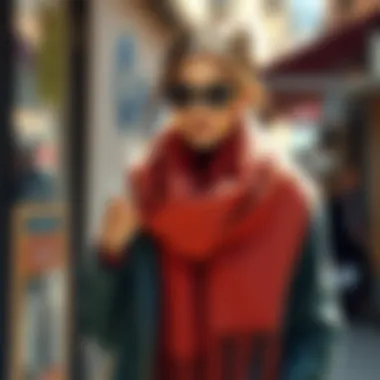
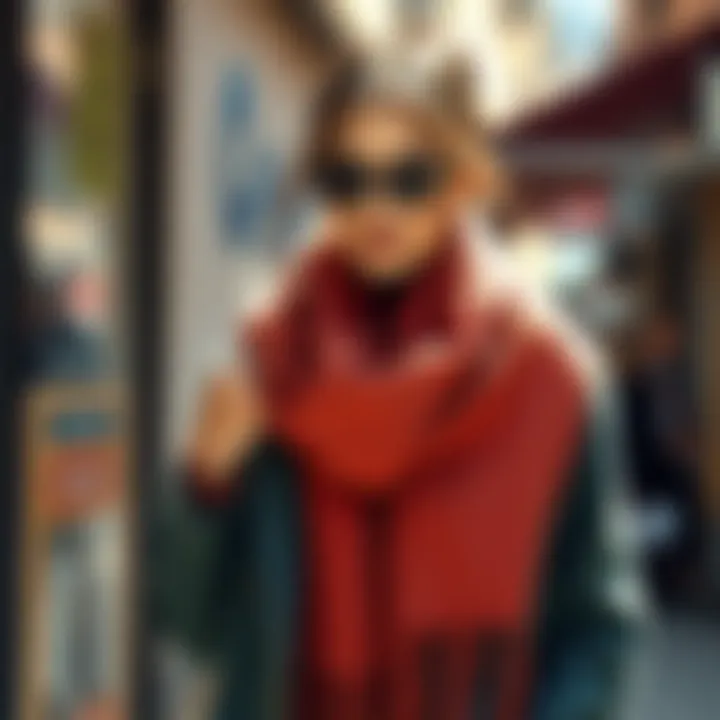
Styling your thick shawl can make a world of difference. It's not just about keeping warm; it's about expressing personal style. Thick shawls are versatile, allowing for various combinations with different outfits. With the right styling, these shawls can elevate any look, whether casual, professional, or evening wear. They add texture and depth, creating a visual interest that can transform even the simplest of attires.
Casual Outfits
Pairing with Jeans
Pairing a thick shawl with jeans is a classic combination. Jeans bring a laid-back vibe, while a shawl adds a touch of coziness. This combo feels just as at home at a coffee shop as at a casual gathering. A person can drape the shawl over their shoulders, adding a layer of warmth and style. This easy mix offers flexibility, allowing you to wear any style of jeans—from skinny to wide-leg. This adaptability makes it a commonly favored choice for many.
The unique feature of this pairing lies in its ability to be dressed up or down. Choose a patterned shawl for a bit of flair or a solid color for a sleek, polished look. However, we must acknowledge that sometimes, the bulkiness of a thick shawl can feel overwhelming if not well balanced with the body type and jeans fit. It’s about finding that sweet spot between style and comfort.
Integration with Maxi Dresses
Integrating thick shawls with maxi dresses offers charm and practicality. This pairing not only keeps you warm but also adds layers that create a visually appealing silhouette. Maxi dresses are often flowing and lightweight, making them a perfect canvas for a thicker shawl. You can choose to wrap it elegantly around your shoulders, creating a stunning contrast between the dress's lightness and the shawl’s rich texture.
What makes this combination particularly beneficial is how it transitions throughout the seasons. Whether it's a chilly evening in summer or a brisk fall day, this pairing works. However, it's also essential to be cautious with color and fabric choices; the extra layer can sometimes clash with the maxi dress’s flowiness, potentially overwhelming the outfit. A careful selection of patterns and hues ensures harmony.
Professional Settings
Office Elegance
Shawls can transform office wear into something chic without coming off as overly formal. A thick shawl draped over a tailored blazer can elevate the entire outfit. This means you can maintain professionalism while adding a touch of personal style. Office elegance often hinges on simplicity and sophistication, and a thick shawl checks those boxes perfectly.
Its key characteristic is not just functionality but the way it adds a timeless element to office attire. A sophisticated shawl can complement a pencil skirt or tailored pants beautifully. However, there's a cautionary note: a shawl that is too bulky may be unwieldy during work, necessitating awareness of its size and weight in professional settings.
Business Casual Combinations
Business casual is where thick shawls truly shine. These shawls can bridge the gap between formal and informal attire. A shawl can effortlessly mix with blouses, dress slacks, or even smart-casual shoes, striking a balance that suits various office environments. This style resonates well with those looking for comfort without sacrificing professionalism.
The beauty of this pairing lies in its versatility. You might opt for a shawl with a subtle design or texture that works with different pieces in your wardrobe, making it a smart choice for business. Still, it’s crucial to remain mindful of texture contrasts. A very rustic shawl paired with sleek, modern business attire can occasionally clash, requiring careful thought in choosing pieces.
Evening Wear Enhancements
Adorning Formal Attires
Thick shawls can significantly enhance evening wear with elegance and sophistication. When draped over formalwear, a shawl serves as both a stylish accessory and a practical way to stay warm during cooler evening events. It complements the overall look, providing that final touch that transforms a standard outfit into something polished.
What makes adorning formal attire unique is the opportunity to show off artistic designs and luxurious fabrics. An intricately patterned shawl can make a solid-colored dress pop. However, balance is essential; pairing a very elaborate shawl with highly detailed formalwear can lead to a clash, drawing attention away from the overall outfit.
Choosing the Right Color Palette
Choosing the right color palette when it comes to styling thick shawls for evening wear is vital. The ideal color can bring harmony to the outfit. For instance, if the dress is a deep navy, a shawl in varying shades of blue can create a cohesive appearance. Opting for complementary hues can elevate the look, ensuring that the shawl enhances rather than detracts from the main attire.
This aspect is particularly beneficial because it allows for creativity in color matching. A bright shawl can become the focal point, adding joy and vibrancy to a nighttime outfit. However, we must also consider that the wrong color can lead to disarray, so careful consideration is essential when making a selection.
"Fashion is what you’re offered four times a year by designers. And style is what you choose." - Lauren Hutton
In summary, thick shawls pack considerable potential in how they can radically alter and enhance outfit choices across various scenarios. Whether casual, professional, or formal, the versatility of styling a thick shawl opens up an array of possibilities for fashion lovers to explore.
Care and Maintenance of Thick Shawls
The longevity of thick shawls hinges significantly on how well they are cared for. Proper maintenance not only helps in preserving the visual appeal and texture of these versatile garments but also ensures that they serve their purpose through countless seasons. Thick shawls, given their various materials, can vary in care requirements, making it essential to understand the best practices for keeping them in top shape. Whether it’s cleaning techniques or storage strategies, each step plays a vital role in maintaining these wardrobe staples.
Cleaning Techniques
Hand Washing vs. Machine Washing
When it comes to cleaning thick shawls, one of the key considerations is choosing between hand washing and machine washing. Hand washing is often recommended for delicate materials like cashmere or fine wool, which can lose shape or texture in the machine. This method allows for more control, minimizing the risk of damaging the fibers. It involves gently swirling the shawl in lukewarm water with a mild detergent, making it a careful approach that many consider beneficial for preserving the integrity of the fabric.
On the flip side, machine washing can be a time-saver for sturdier materials like acrylic or wool blends. Modern washing machines often have a delicate cycle tailored to handle softer fabrics without causing wear. However, there's always a risk of shrinkage or distortion if the wrong settings are used. For the busy fashionista, machine washing can represent an efficient choice, but keep an eye on the care label to avoid any mishaps.
Dry Cleaning Options
Another alternative is dry cleaning. This method is particularly well-suited for luxurious shawls made from intricate fabrics that make home washing risky. The most beneficial aspect of dry cleaning is that it effectively removes deep-seated stains and odors without subjecting the fabric to water, preserving its original texture and structure. A unique feature of dry cleaning is the use of chemical solvents that can be less harsh on fibers than traditional detergents.
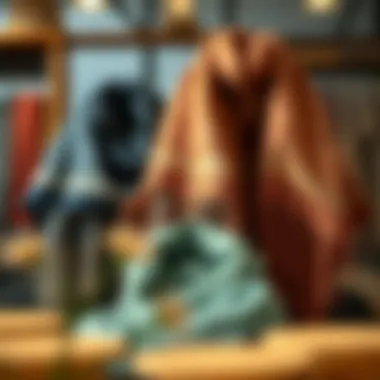
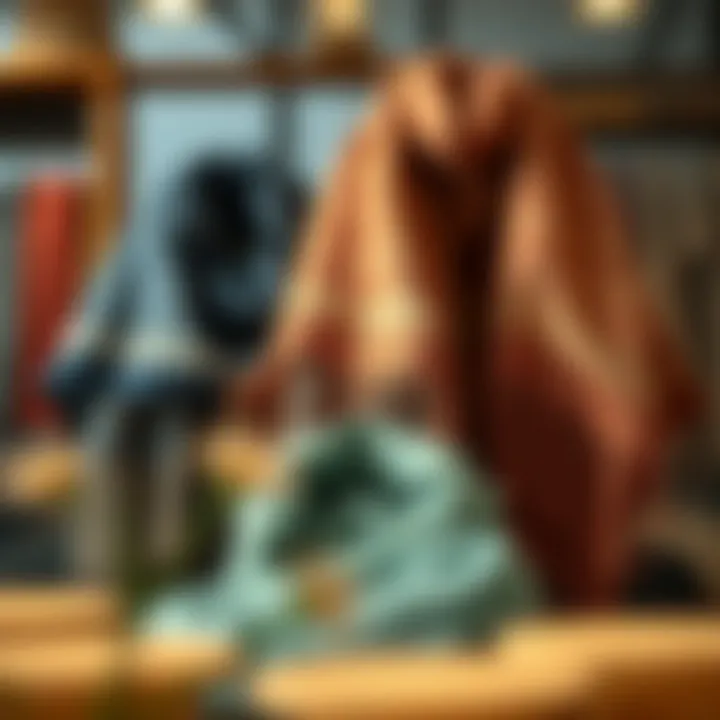
However, it is also worth noting that relying on dry cleaning can be a more costly option and not always accessible. Additionally, the chemicals used in the process can raise sustainability concerns for environmentally-conscious consumers. Thus, weighing the pros and cons becomes crucial when deciding on cleaning methods, especially in terms of maintenance and sustainability.
Storage Best Practices
Keeping Fabrics Safe from Damage
Storing thick shawls properly is just as vital as cleaning them. One of the essential practices is to keep fabrics safe from damage. For instance, it’s best to fold shawls instead of hanging them, as hanging can cause stretching and misshaping over time. Using breathable fabric bags and avoiding plastic can further protect these garments from dust and unwanted moisture that might promote mildew. This aspect of storage is crucial for longevity, and many consider it an art form in itself, knowing how a simple choice like folding can preserve the fabric’s quality.
Avoiding Environmental Factors
Being mindful of environmental factors is also a major concern for the storage of thick shawls. Areas with high humidity can encourage mold growth, while extreme dryness can lead to brittleness in certain fabrics. A well-ventilated, temperature-controlled closet or drawer can work wonders in safeguarding your shawls. Another characteristic to consider is avoiding direct sunlight exposure, which can fade colors and weaken fibers. Thus, these small details combine to create an environment that supports fabric preservation.
Tip: Regularly check stored shawls for any signs of wear or pest infestation, ensuring they remain in pristine condition.
Understanding these care and storage practices will inevitably lead to a more sustainable approach to fashion, allowing thick shawls to shine in their full glory for many wears to come.
Sustainability Considerations
In today's world, where awareness of environmental concerns is at an all-time high, sustainability has become a crucial factor in fashion. When it comes to thick shawls, understanding sustainability considerations can make a notable difference. Consumers increasingly seek products that align with their values, emphasizing ethical practices and environmental friendliness. Thick shawls, often seen as versatile fashion pieces, can also contribute positively towards sustainability goals.
Ethical sourcing of materials plays an instrumental role in ensuring that the production of thick shawls respects human rights and minimizes environmental impact. It’s not just about throwing on a piece of clothing; it’s about embracing a lifestyle that values the origins of what we wear. By choosing shawls made from responsibly sourced materials, consumers can support communities and production practices that prioritize ecological balance and social equity.
Ethical Material Sourcing
One of the primary pillars of sustainability in fashion is the ethical sourcing of materials. When we talk about thick shawls, the journey begins right from the selection of fibers that go into their making. Brands are increasingly turning to organic fibers, which are produced without harmful pesticides or synthetic fertilizers. Wool, cashmere, and linen can all be sourced ethically, aligning with practices that conserve water and support biodiversity.
Moreover, transparency in sourcing enables consumers to understand where and how their shawls are made. This transparency fosters trust and encourages more ethical buying habits. By choosing shawls that highlight these ethical sourcing practices, individuals can take significant steps towards supporting sustainable fashion.
Sustainable Fashion Practices
Implementing sustainable fashion practices is a vital step in the journey towards a more eco-friendly wardrobe. Understanding how to recycle and upcycle materials can transform how thick shawls are viewed and used in everyday life.
Recycling and Upcycling Ideas
Recycling and upcycling not only prolong the life of garments but also significantly lessen waste. For thick shawls, this might mean repurposing an older shawl into smaller accessories like headbands or scrunchies. It’s a fun, creative process that can also yield unique fashion statements, giving new life to items that may have otherwise gathered dust.
Key characteristics of recycling and upcycling include creativity and resourcefulness. This practice is becoming increasingly popular, particularly among those who are conscious about reducing their carbon footprint. Upcycling, in particular, provides an avenue for individuality in fashion, as each repurposed piece tells its own unique story. However, the challenge remains in maintaining the quality and comfort while transforming the material.
Choosing Long-lasting Shawls
Opting for long-lasting shawls is another intelligent way to combat the fast fashion mentality that has dominated the textile industry. By investing in quality over quantity, consumers help to reduce the cycles of disposal and replacement that harm the environment. These shawls are often made from durable materials designed to withstand the test of time, making them a staple in any wardrobe.
A key characteristic of long-lasting shawls is their ability to age beautifully. The fibers tend to develop a lovely patina over time, adding character and charm. Moreover, while the initial investment might be higher, the longevity of these items proves to be a worthwhile choice economically in the long run. Still, buyers need to be discerning about materials; low-quality fabrics can lead to premature wear, which doesn’t help sustainability efforts.
In sum, sustainability considerations are integral to the conversation about thick shawls. Choosing ethical materials and embracing sustainable fashion practices like recycling and upcycling can profoundly influence both personal style and global environmental efforts. As we wrap ourselves in thick, cozy shawls, let’s remember the importance of making choices that reflect our values while staying stylish.
"Every small effort counts, especially when it comes to reducing our environmental impact through thoughtful choices in our wardrobes."
Sources:
- Wikipedia on Sustainable Fashion
- Britannica - Eco Fashion
- Reddit - Fashion Sustainability Discussion
- U.S. Environmental Protection Agency
- Fashion Revolution
Ending
Thick shawls have carved their niche in the fabric of fashion, proving to be more than just a piece of clothing. Their versatility and utility are paramount, capable of adapting to various situations and embodying different stylistic expressions. This guide delved into the multifaceted role of thick shawls, highlighting their historical relevance, diverse materials, and styling potential. Through a careful exploration, it becomes clear why thick shawls are essential wardrobe companions.
"Shawls are not just tools for warmth; they are storytellers, binding together cultures and styles across the globe."
Recapitulating Versatility and Utility
One of the most striking aspects of thick shawls lies in their ability to switch gears with ease. Whether you're layering up for a winter stroll or draping one casually over your shoulders for a summer evening, the adaptability of thick shawls is impressive. Made from a variety of materials like wool, cashmere, and acrylic, they can offer everything from warmth to breathability. Fashion designers and stylists can play on this versatility by blending different textures and colors, meaning there’s always a perfect shawl to accentuate any outfit.
Consider the shapeshifting potential of a thick shawl:
- Layering Mastery: Perfect for layering over other garments, they can elevate a simple outfit, adding depth and interest.
- Style Extension: From chic ponchos to classic wraps, the wide range of designs offers choices for every fashion mood.
- Seasonal Transition: A thick shawl transitions beautifully across the seasons, allowing for a seamless incorporation into the wardrobe.
Encouraging Thoughtful Choices in Fashion
This journey through the realm of thick shawls emphasizes the importance of thoughtful selections in fashion. It’s not just about aesthetics—choosing the right scarf involves considerations of functionality, sustainability, and personal values.
- Sustainable Materials: Opting for shawls made from ethically sourced materials not only supports responsible fashion but also contributes to a more sustainable wardrobe. Brands focusing on sustainability are increasingly available, making it easier to shop with purpose.
- Personal Style Reflection: Each shawl can express individuality. By carefully selecting colors, patterns, and materials, wearers can make powerful statements about their personal style and beliefs.
- Longevity: Investing in high-quality shawls ensures longevity and reduces the need for frequent replacements, promoting a more sustainable approach to fashion.



